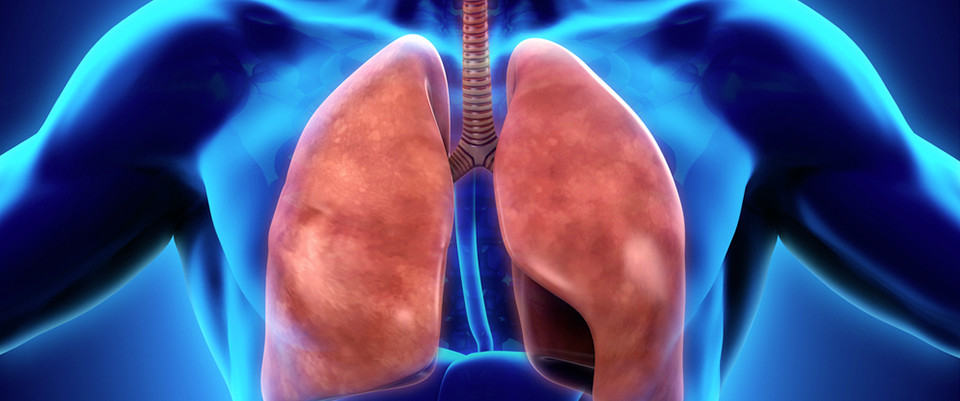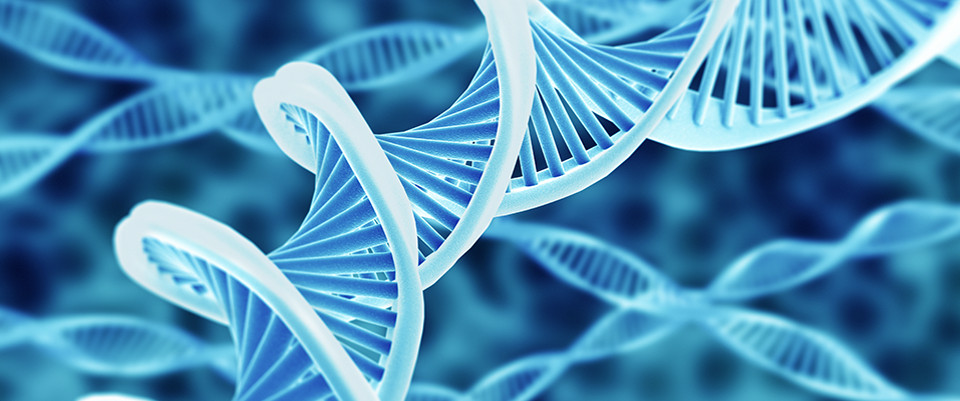PubMed
Metabolomic profiles predict clinical severity in patients with obstructive sleep apnea hypopnea syndrome
J Clin Sleep Med. 2024 Apr 23. doi: 10.5664/jcsm.11160. Online ahead of print.ABSTRACTSTUDY OBJECTIVES: Obstructive sleep apnea hypopnea syndrome (OSAHS) poses a significant health hazard, as intermittent hypoxia inflicts damage throughout the body and is considered a critical risk factor for metabolic disorders. The aim of this study was to establish a metabolic profile for patients with OSAHS using nontargeted metabolomics detection techniques, providing a basis for OSAHS diagnosis and novel biological marker identification.METHODS: Forty-five patients with OSAHS composed the OSAHS group, and 44 healthy volunteers composed the control group. Nontargeted metabolomics technology was used to analyze participants' urinary metabolites. Differentially abundant metabolites were screened and correlated through hierarchical clustering analysis. We constructed a composite metabolite diagnostic model using a random forest model. Simultaneously, we analyzed the relationships between 20 metabolites involved in model construction and OSAHS severity.RESULTS: The urinary metabolomics pattern of the OSAHS group exhibited significant changes, demonstrating noticeable differences in metabolic products. Urinary metabolite analysis revealed differences between the mild-moderate OSAHS and severe OSAHS groups. The composite metabolite model constructed in this study demonstrated excellent diagnostic performance not only in distinguishing healthy control participants from patients with mild-moderate OSAHS (AUC = 0.78) and patients with severe OSAHS (AUC = 0.78), but also in discriminating between patients with mild-moderate and severe OSAHS (AUC = 0.71).CONCLUSIONS: This study comprehensively analyzed the urinary metabolomic characteristics of patients with OSAHS. The established composite metabolite model provides robust support for OSAHS diagnosis and severity assessment. Twenty metabolites associated with OSAHS disease severity offer a new perspective for diagnosis.PMID:38652501 | DOI:10.5664/jcsm.11160
Metabolomic Analysis of Human Cirrhosis and Hepatocellular Carcinoma: A Pilot Study
Dig Dis Sci. 2024 Apr 23. doi: 10.1007/s10620-024-08446-1. Online ahead of print.ABSTRACTBACKGROUND: Molecular changes in HCC development are largely unknown. As the liver plays a fundamental role in the body's metabolism, metabolic changes are to be expected.AIMS: We aimed to identify metabolomic changes in HCC in comparison to liver cirrhosis (LC) patients, which could potentially serve as novel biomarkers for HCC diagnosis and prognosis.METHODS: Metabolite expression from 38 HCC from the SORAMIC trial and 32 LC patients were analyzed by mass spectrometry. Metabolites with significant differences between LC and HCC at baseline were analyzed regarding expression over follow-up. In addition, association with overall survival was tested using univariate Cox proportional-hazard analysis.RESULTS: 41 metabolites showed differential expression between LC and HCC patients. 14 metabolites demonstrated significant changes in HCC patients during follow-up. Campesterol, lysophosphatidylcholine, octadecenoic and octadecadienoic acid, and furoylglycine showed a differential expression in the local ablation vs. palliative care group. High expression of eight metabolites (octadecenoic acid, 2-hydroxybutyrate, myo-inositol, isocitrate, erythronic acid, creatinine, pseudouridine, and erythrol) were associated with poor overall survival. The association between poor OS and octadecenoic acid and creatinine remained statistically significant even after adjusting for tumor burden and LC severity.CONCLUSION: Our findings give promising insides into the metabolic changes during HCC carcinogenesis and provide candidate biomarkers for future studies. Campesterol and furoylglycine in particular were identified as possible biomarkers for HCC progression. Moreover, eight metabolites were detected as predictors for poor overall survival.PMID:38652389 | DOI:10.1007/s10620-024-08446-1
Global untargeted and individual targeted plasma metabolomics of breast cancer recurrence modified by hormone receptors
Breast Cancer. 2024 Apr 23. doi: 10.1007/s12282-024-01579-1. Online ahead of print.ABSTRACTBACKGROUND: Breast cancer is a heterogeneous and complex etiological disease. Understanding perturbations of circulating metabolites could improve prognosis.METHODS: We recruited breast cancer patients from Kaohsiung Medical University (KMU) to perform untargeted (case-control design) and targeted (patient cohort) metabolomics analyses in the discovery and validation phases to evaluate interaction effects between clinical factors and plasma metabolites using multivariable Cox proportional hazards model.RESULTS: In the discovery phase, partial least squares-discriminant analysis (PLS-DA) showed that plasma metabolites were significantly different between recurrent and non-recurrent breast cancer patients. Metabolite set enrichment analysis (MSEA) and metabolomic pathway analysis (MetPA) showed that valine, leucine, and isoleucine degradation was the significant pathway, and volcano plot showed significant ten upregulated and two downregulated metabolites between recurrent and non-recurrent cases. Combined with receiver operating characteristic (ROC) curve and biological significance, creatine, valine, methionine, and mannose were selected for the validation phase. In this patient cohort with 41 new-recurrent vs. 248 non-recurrent breast cancer cases, followed for 720.49 person-years, compared with low level of valine, high valine level was significantly negatively associated with recurrent breast cancer (aHR: 0.36, 95% CI: 0.18-0.72, P = 0.004), especially in ER-negative and PR-negative status. There were interaction effects between valine and ER (Pinteraction = 0.006) as well as PR (Pinteraction = 0.002) on recurrent breast cancer. After Bonferroni correction, stratification effects between valine and hormone receptors were still significant.CONCLUSION: Our study revealed that plasma metabolites were significantly different between recurrent and non-recurrent patients, proposing therapeutic insights for breast cancer prognosis.PMID:38652345 | DOI:10.1007/s12282-024-01579-1
Bacterial discrimination by Fourier transform infrared spectroscopy, MALDI-mass spectrometry and whole-genome sequencing
Future Microbiol. 2024 Apr 23. doi: 10.2217/fmb-2024-0043. Online ahead of print.ABSTRACTAim: Proof-of-concept study, highlighting the clinical diagnostic ability of FT-IR compared with MALDI-TOF MS, combined with WGS. Materials & methods: 104 pathogenic isolates of Neisseria meningitidis, Streptococcus pneumoniae, Streptococcus pyogenes and Staphylococcus aureus were analyzed. Results: Overall prediction accuracy was 99.6% in FT-IR and 95.8% in MALDI-TOF-MS. Analysis of N. meningitidis serogroups was superior in FT-IR compared with MALDI-TOF-MS. Phylogenetic relationship of S. pyogenes was similar by FT-IR and WGS, but not S. aureus or S. pneumoniae. Clinical severity was associated with the zinc ABC transporter and DNA repair genes in S. pneumoniae and cell wall proteins (biofilm formation, antibiotic and complement permeability) in S. aureus via WGS. Conclusion: FT-IR warrants further clinical evaluation as a promising diagnostic tool.PMID:38652264 | DOI:10.2217/fmb-2024-0043
Extent of Virulence and Antibiotic Resistance Genes in Helicobacter pylori and Campylobacteria
Curr Microbiol. 2024 Apr 23;81(6):154. doi: 10.1007/s00284-024-03653-5.ABSTRACTHelicobacter pylori, a member of the clade campylobacteria, is the leading cause of chronic gastritis and gastric cancer. Virulence and antibiotic resistance of H. pylori are of great concern to public health. However, the relationship between virulence and antibiotic resistance genes in H. pylori in relation to other campylobacteria remains unclear. Using the virulence and comprehensive antibiotic resistance databases, we explored all available 354 complete genomes of H. pylori and compared it with 90 species of campylobacteria for virulence and antibiotic resistance genes/proteins. On average, H. pylori had 129 virulence genes, highest among Helicobacter spp. and 71 antibiotic resistance genes, one of the lowest among campylobacteria. Just 2.6% of virulence genes were shared by all campylobacterial members, whereas 9.4% were unique to H. pylori. The cytotoxin-associated genes (cags) seemed to be exclusive to H. pylori. Majority of the isolates from Asia and South America were cag2-negative and many antibiotic resistance genes showed isolate-specific patterns of occurrence. Just 15 (8.8%) antibiotic resistance genes, but 103 (66%) virulence genes including 25 cags were proteomically identified in H. pylori. Arcobacterial members showed large variation in the number of antibiotic resistance genes and there was a positive relation with the genome size. Large repository of antibiotic resistance genes in campylobacteria and a unique set of virulence genes might have important implications in shaping the course of virulence and antibiotic resistance in H. pylori.PMID:38652129 | DOI:10.1007/s00284-024-03653-5
Untargeted, tandem mass spectrometry metaproteome of Columbia River sediments
Microbiol Resour Announc. 2024 Apr 23:e0003324. doi: 10.1128/mra.00033-24. Online ahead of print.ABSTRACTRivers are critical ecosystems that impact global biogeochemical cycles. Nonetheless, a mechanistic understanding of river microbial metabolisms and their influences on geochemistry is lacking. Here, we announce metaproteomes of river sediments that are paired with metagenomes and metabolites, enabling an understanding of the microbial underpinnings of river respiration.PMID:38651910 | DOI:10.1128/mra.00033-24
A nested case-control study of untargeted plasma metabolomics and lung cancer among never-smoking women within the prospective Shanghai Women's Health Study
Int J Cancer. 2024 Apr 23. doi: 10.1002/ijc.34929. Online ahead of print.ABSTRACTThe etiology of lung cancer in never-smokers remains elusive, despite 15% of lung cancer cases in men and 53% in women worldwide being unrelated to smoking. Here, we aimed to enhance our understanding of lung cancer pathogenesis among never-smokers using untargeted metabolomics. This nested case-control study included 395 never-smoking women who developed lung cancer and 395 matched never-smoking cancer-free women from the prospective Shanghai Women's Health Study with 15,353 metabolic features quantified in pre-diagnostic plasma using liquid chromatography high-resolution mass spectrometry. Recognizing that metabolites often correlate and seldom act independently in biological processes, we utilized a weighted correlation network analysis to agnostically construct 28 network modules of correlated metabolites. Using conditional logistic regression models, we assessed the associations for both metabolic network modules and individual metabolic features with lung cancer, accounting for multiple testing using a false discovery rate (FDR) < 0.20. We identified a network module of 121 features inversely associated with all lung cancer (p = .001, FDR = 0.028) and lung adenocarcinoma (p = .002, FDR = 0.056), where lyso-glycerophospholipids played a key role driving these associations. Another module of 440 features was inversely associated with lung adenocarcinoma (p = .014, FDR = 0.196). Individual metabolites within these network modules were enriched in biological pathways linked to oxidative stress, and energy metabolism. These pathways have been implicated in previous metabolomics studies involving populations exposed to known lung cancer risk factors such as traffic-related air pollution and polycyclic aromatic hydrocarbons. Our results suggest that untargeted plasma metabolomics could provide novel insights into the etiology and risk factors of lung cancer among never-smokers.PMID:38651675 | DOI:10.1002/ijc.34929
Targeted and untargeted metabolomic profiles in wild rabbit does (Oryctolagus cuniculus) of different breeding states (pregnant and lactating)
J Exp Zool A Ecol Integr Physiol. 2024 Apr 23. doi: 10.1002/jez.2818. Online ahead of print.ABSTRACTEcological nutrition aims to unravel the extensive web of nutritional links that drives animals in their interactions with their ecological environments. Nutrition plays a key role in the success of European wild rabbit (Oryctolagus cuniculus) and could be affected by the breeding status of the animals and reflected in the metabolome of this species. As nutritional needs are considerably increased during pregnancy and lactation, the main objective of this work was to determine how the breeding status (pregnant and lactating) of European wild rabbit does affects nutritional requirements and their metabolome (using targeted and untargeted metabolomics), aiming to find a useful biomarker of breeding status and for monitoring nutritional requirements. To address this gap, 60 wild European rabbits were studied. Animals were divided according to their breeding status and only pregnant (n = 18) and lactating (n = 11) rabbit does were used (n = 29 in total). The body weight and length of each animal were analyzed. The relative and absolute chemical composition of the gastric content and whole blood sample were taken, and targeted and untargeted metabolomics were analyzed. As a main result, there were no differences in biometric measurements, gastric content, and targeted metabolomics, except for live weight and nonesterified fatty acids (NEFA), as pregnant animals showed higher live weight (+12%; p = 0.0234) and lower NEFA acid levels (-46%; p = 0.0262) than lactating females. Regarding untargeted metabolomics, a good differentiation of the metabolome of the two breeding groups was confirmed, and it was proven that pregnant animals showed higher plasmatic levels of succinic anhydride (3.48 more times; p = 0.0236), succinic acid (succinate) (3.1 more times; p = 0.0068) and propionic acid (3.98 more times; p = 0.0121) than lactating animals. However, lactating animals showed higher levels of N-[(3a,5b,7b)-7-hydroxy-24-oxo-3-(sulfoxide) cholan-24-yl]-Glycine (cholestadien) (2.4 more times; p < 0.0420), 4-maleyl-acetoacetate (MAA) (3.2 more times; p < 0.0364) and irilone (2.2 more times; p = 0.0451) than pregnant animals, any of these metabolites could be used as a potential biomarker. From these results, it can be concluded that the most notable changes were observed in the metabolome of individuals, with most of the changes observed being due to energy and protein mobilisation.PMID:38651595 | DOI:10.1002/jez.2818
Proteomics-The State of the Field: The Definition and Analysis of Proteomes Should Be Based in Reality, Not Convenience
Proteomes. 2024 Apr 19;12(2):14. doi: 10.3390/proteomes12020014.ABSTRACTWith growing recognition and acknowledgement of the genuine complexity of proteomes, we are finally entering the post-proteogenomic era. Routine assessment of proteomes as inferred correlates of gene sequences (i.e., canonical 'proteins') cannot provide the necessary critical analysis of systems-level biology that is needed to understand underlying molecular mechanisms and pathways or identify the most selective biomarkers and therapeutic targets. These critical requirements demand the analysis of proteomes at the level of proteoforms/protein species, the actual active molecular players. Currently, only highly refined integrated or integrative top-down proteomics (iTDP) enables the analytical depth necessary to provide routine, comprehensive, and quantitative proteome assessments across the widest range of proteoforms inherent to native systems. Here we provide a broad perspective of the field, taking in historical and current realities, to establish a more balanced understanding of where the field has come from (in particular during the ten years since Proteomes was launched), current issues, and how things likely need to proceed if necessary deep proteome analyses are to succeed. We base this in our firm belief that the best proteomic analyses reflect, as closely as possible, the native sample at the moment of sampling. We also seek to emphasise that this and future analytical approaches are likely best based on the broad recognition and exploitation of the complementarity of currently successful approaches. This also emphasises the need to continuously evaluate and further optimize established approaches, to avoid complacency in thinking and expectations but also to promote the critical and careful development and introduction of new approaches, most notably those that address proteoforms. Above all, we wish to emphasise that a rigorous focus on analytical quality must override current thinking that largely values analytical speed; the latter would certainly be nice, if only proteoforms could thus be effectively, routinely, and quantitatively assessed. Alas, proteomes are composed of proteoforms, not molecular species that can be amplified or that directly mirror genes (i.e., 'canonical'). The problem is hard, and we must accept and address it as such, but the payoff in playing this longer game of rigorous deep proteome analyses is the promise of far more selective biomarkers, drug targets, and truly personalised or even individualised medicine.PMID:38651373 | DOI:10.3390/proteomes12020014
Chemical characteristics, antioxidant capacity, bacterial community, and metabolite composition of mulberry silage ensiling with lactic acid bacteria
Front Microbiol. 2024 Apr 8;15:1363256. doi: 10.3389/fmicb.2024.1363256. eCollection 2024.ABSTRACTMulberry has high crude protein and biologically active compounds but is difficult to be ensiled due to the lack of adequate epiphytic LAB. This study aimed to investigate the effects of inoculation with Lactiplantibacillus plantarum and Pediococcus pentosaceus isolated from mulberry with higher antioxidant capacity alone or in combination with Streptococcus bovis on chemical characteristics, antioxidant capacity, bacterial community, and metabolite composition of mulberry silage. The results showed that all inoculation groups had higher dry matter and lower pH than the control group, particularly in LP (dry matter, DM, 32.03% and pH = 4.44) and LP_PP_SB (DM, 31.68% and pH = 4.26) after 60 days of ensiling. Ammonia nitrogen (AN) content was the lowest in both LP_SB and LP_PP_SB groups, which were 1.86 g/kg FM and 1.05 g/kg FM, respectively, (P < 0.05). Only the LP_PP_SB group showed increased polyunsaturated fatty acids (PUFA, 1.2851 g/kg DM, P < 0.05) than the control group. Ferric-reducing antioxidant power (FRAP) values were increased in all inoculation-treated groups compared with the control group (P < 0.05). 2,2-Diphenyl-1-picrylhydrazyl (DDPH), 3-ethylbenzothiazoline-6-sulfonic acid (ABTS), and FRAP exhibited the highest levels in the LP_PP- and LP_PP_SB-treated groups. Enterobacter was dominant in both the control and SB-treated groups, and the relative abundance was 41.18% and 32.35%, respectively (P < 0.05). The relative abundance of Lactiplantibacillus was higher in the LP-, LP_PP-, and LP_SB-treated groups (81.84%-82.69%). Relative abundance of Pediococcus was higher in the PP-, PP_SB-, and LP_PP_SB-treated groups (74.27%-85.27%). Untargeted metabolomics analysis results showed that five flavonoids (apigenin, eriodictyol, quercetin-3-glucoside, rutin, and kaempferol-3-O-rutinoside)were upregulated in all inoculation groups (except for the SB-treated groups). Among them, eriodictyol was both positively correlated with ABTS and FRAP and also showed the highest relative abundance in the LP_PP- and LP_PP_SB-treated groups. To the best of our knowledge, this study was the first to investigate the relationship between inoculants of epiphytic lactic acid bacteria and antioxidant capacity by 16s rRNA Illumina sequencing technology and untargeted metabolomics analysis, respectively. Consequently, inoculated L. plantarum, P. pentosaceus alone, respectively, or in combination with S. bovis increased the relative abundance of Lactiplantibacillus and Pediococcus and decreased the relative abundance of Enterobacter, particularly in the LP_PP_SB-treated group. In addition, inoculants could increase the relative abundance of five flavonoids (apigenin, eriodictyol, quercetin-3-glucoside, rutin, and kaempferol-3-O-rutinoside), especially eriodictyol to improve the antioxidant capacity of mulberry silage.PMID:38650879 | PMC:PMC11033325 | DOI:10.3389/fmicb.2024.1363256
Metabolome and transcriptome integration reveals insights into petals coloration mechanism of three species in Sect. Chrysantha chang
PeerJ. 2024 Apr 19;12:e17275. doi: 10.7717/peerj.17275. eCollection 2024.ABSTRACTBACKGROUND: Sect. Chrysantha Chang, belonging to the Camellia genus, is one of the rare and precious ornamental plants distinguished by a distinctive array of yellow-toned petals. However, the variation mechanisms of petal color in Sect. Chrysantha Chang remains largely unclear.METHODS: We conducted an integrated analysis of metabolome and transcriptome to reveal petal coloration mechanism in three species, which have different yellow tones petals, including C. chuongtsoensis (CZ, golden yellow), C. achrysantha (ZD, light yellow), and C. parvipetala (XB, milk white).RESULTS: A total of 356 flavonoid metabolites were detected, and 295 differential metabolites were screened. The contents of 74 differential metabolites showed an upward trend and 19 metabolites showed a downward trend, among which 11 metabolites were annotated to the KEGG pathway database. We speculated that 10 metabolites were closely related to the deepening of the yellowness. Transcriptome analysis indicated that there were 2,948, 14,018 and 13,366 differentially expressed genes (DEGs) between CZ vs. ZD, CZ vs. XB and ZD vs. XB, respectively. Six key structural genes (CcCHI, CcFLS, CcDFR1, CcDFR2, CcDFR3, and CcCYP75B1) and five candidate transcription factors (MYB22, MYB28, MYB17, EREBP9, and EREBP13) were involved in the regulation of flavonoid metabolites. The findings indicate that flavonoid compounds influence the color intensity of yellow-toned petals in Sect. Chrysantha Chang. Our results provide a new perspective on the molecular mechanisms underlying flower color variation and present potential candidate genes for Camellia breeding.PMID:38650646 | PMC:PMC11034495 | DOI:10.7717/peerj.17275
Identification of mulberry leaf flavonoids and evaluating their protective effects on H<sub>2</sub>O<sub>2</sub>-induced oxidative damage in equine skeletal muscle satellite cells
Front Mol Biosci. 2024 Apr 8;11:1353387. doi: 10.3389/fmolb.2024.1353387. eCollection 2024.ABSTRACTIntroduction: Horses are susceptible to oxidative stress during strenuous endurance exercise, leading to muscle fatigue and damage. Mulberry leaf flavonoids (MLFs) possess significant antioxidant properties. However, the antioxidant efficacy of MLFs can be influenced by the extraction process, and their impact on H2O2-induced oxidative stress in equine skeletal muscle satellite cells (ESMCs) remains unexplored. Methods: Our study employed three extraction methods to obtain MLFs: ultrasound-assisted extraction (CEP), purification with AB-8 macroporous resin (RP), and n-butanol extraction (NB-EP). We assessed the protective effects of these MLFs on H2O2-induced oxidative stress in ESMCs and analyzed the MLF components using metabolomics. Results: The results revealed that pre-treatment with MLFs dose-dependently protected ESMCs against H2O2-induced oxidative stress. The most effective concentrations were 0.8 mg/mL of CEP, 0.6 mg/mL of RP, and 0.6 mg/mL of NB-EP, significantly enhancing EMSC viability (p < 0.05). These optimized MLF concentrations promoted the GSH-Px, SOD and T-AOC activities (p < 0.05), while reducing MDA production (p < 0.05) in H2O2-induced ESMCs. Furthermore, these MLFs enhanced the gene expression, including Nrf2 and its downstream regulatory genes (TrxR1, GPX1, GPX3, SOD1, and SOD2) (p < 0.05). In terms of mitochondrial function, ESMCs pre-treated with MLFs exhibited higher basal respiration, spare respiratory capacity, maximal respiration, ATP-linked respiration compared to H2O2-induced ESMCs (p < 0.05). Additionally, MLFs enhanced cellular basal glycolysis, glycolytic reserve, and maximal glycolytic capacity (p < 0.05). Metabolomics analysis results revealed significant differences in mulberrin, kaempferol 3-O-glucoside [X-Mal], neohesperidin, dihydrokaempferol, and isobavachalcone among the three extraction processes (p < 0.05). Discussion: Our study revealed that MLFs enhance antioxidant enzyme activity, alleviate oxidative damage in ESMCs through the activation of the Nrf2 pathway, and improve mitochondrial respiration and cell energy metabolism. Additionally, we identified five potential antioxidant flavonoid compounds, suggesting their potential incorporation into the equine diet as a strategy to alleviate exercise-induced oxidative stress.PMID:38650596 | PMC:PMC11033687 | DOI:10.3389/fmolb.2024.1353387
Combined transcriptome and metabolome analyses reveal the potential mechanism for the inhibition of Penicillium digitatum by X33 antimicrobial oligopeptide
Bioresour Bioprocess. 2021 Dec 2;8(1):120. doi: 10.1186/s40643-021-00472-5.ABSTRACTPenicillium digitatum is the primary spoilage fungus that causes green mold during postharvest in citrus. To reduce economic losses, developing more efficient and less toxic natural antimicrobial agents is urgently required. We previously found that the X33 antimicrobial oligopeptide (X33 AMOP), produced by Streptomyces lavendulae X33, exhibited a sterilization effect on P. digitatum. In this study, the effects, and physiological mechanisms of X33 AMOP as an inhibitor of P. digitatum were investigated. The transcriptional and metabolome profiling of P. digitatum exposed to X33 AMOP revealed 3648 genes and 190 metabolites that were prominently changed. The omics analyses suggested that X33 AMOP mainly inhibited P. digitatum growth by affecting cell integrity, genetic information delivery, oxidative stress tolerance, and energy metabolism. These findings provide helpful information regarding the antimicrobial mechanism of X33 AMOP against P. digitatum at the molecular level and indicate that X33 AMOP is a potential candidate to control P. digitatum.PMID:38650267 | DOI:10.1186/s40643-021-00472-5
A novel strategy for D-psicose and lipase co-production using a co-culture system of engineered Bacillus subtilis and Escherichia coli and bioprocess analysis using metabolomics
Bioresour Bioprocess. 2021 Aug 19;8(1):77. doi: 10.1186/s40643-021-00429-8.ABSTRACTTo develop an economically feasible fermentation process, this study designed a novel bioprocess based on the co-culture of engineered Bacillus subtilis and Escherichia coli for the co-production of extracellular D-psicose and intracellular lipase. After optimizing the co-culture bioprocess, 11.70 g/L of D-psicose along with 16.03 U/mg of lipase was obtained; the glucose and fructose were completely utilized. Hence, the conversion rate of D-psicose reached 69.54%. Compared with mono-culture, lipase activity increased by 58.24%, and D-psicose production increased by 7.08%. In addition, the co-culture bioprocess was explored through metabolomics analysis, which included 168 carboxylic acids and derivatives, 70 organooxygen compounds, 34 diazines, 32 pyridines and derivatives, 30 benzene and substituted derivatives, and other compounds. It also could be found that the relative abundance of differential metabolites in the co-culture system was significantly higher than that in the mono-culture system. Pathway analysis revealed that, tryptophan metabolism and β-alanine metabolism had the highest correlation and played an important role in the co-culture system; among them, tryptophan metabolism regulates protein synthesis and β-alanine metabolism, which is related to the formation of metabolic by-products. These results confirm that the co-cultivation of B. subtilis and E. coli can provide a novel idea for D-psicose and lipase biorefinery, and are beneficial for the discovery of valuable secondary metabolites such as turanose and morusin.PMID:38650263 | DOI:10.1186/s40643-021-00429-8
Comparison of canine colostrum and milk using a multi-omics approach
Anim Microbiome. 2024 Apr 22;6(1):19. doi: 10.1186/s42523-024-00309-4.ABSTRACTBACKGROUND: A mother's milk is considered the gold standard of nutrition in neonates and is a source of cytokines, immunoglobulins, growth factors, and other important components, yet little is known about the components of canine milk, specifically colostrum, and the knowledge related to its microbial and metabolic profiles is particularly underwhelming. In this study, we characterized canine colostrum and milk microbiota and metabolome for several breeds of dogs and examined profile shifts as milk matures in the first 8 days post-whelping.RESULTS: Through untargeted metabolomics, we identified 63 named metabolites that were significantly differentially abundant between days 1 and 8 of lactation. Surprisingly, the microbial compositions of the colostrum and milk, characterized using 16S rRNA gene sequencing, were largely similar, with only two differentiating genera. The shifts observed, mainly increases in several sugars and amino sugars over time and shifts in amino acid metabolites, align with shifts observed in human milk samples and track with puppy development.CONCLUSION: Like human milk, canine milk composition is dynamic, and shifts are well correlated with developing puppies' needs. Such a study of the metabolic profile of canine milk, and its relation to the microbial community, provides insights into the changing needs of the neonate, as well as the ideal nutrition profile for optimal functionality. This information will add to the existing knowledge base of canine milk composition with the prospect of creating a quality, tailored milk substitute or supplement for puppies.PMID:38650014 | DOI:10.1186/s42523-024-00309-4
The influence of maternal prepregnancy weight and gestational weight gain on the umbilical cord blood metabolome: a case-control study
BMC Pregnancy Childbirth. 2024 Apr 22;24(1):297. doi: 10.1186/s12884-024-06507-x.ABSTRACTBACKGROUND: Maternal overweight/obesity and excessive gestational weight gain (GWG) are frequently reported to be risk factors for obesity and other metabolic disorders in offspring. Cord blood metabolites provide information on fetal nutritional and metabolic health and could provide an early window of detection of potential health issues among newborns. The aim of the study was to explore the impact of maternal prepregnancy overweight/obesity and excessive GWG on cord blood metabolic profiles.METHODS: A case control study including 33 pairs of mothers with prepregnancy overweight/obesity and their neonates, 30 pairs of mothers with excessive GWG and their neonates, and 32 control mother-neonate pairs. Untargeted metabolomic profiling of umbilical cord blood samples were performed using UHPLC‒MS/MS.RESULTS: Forty-six metabolites exhibited a significant increase and 60 metabolites exhibited a significant reduction in umbilical cord blood from overweight and obese mothers compared with mothers with normal body weight. Steroid hormone biosynthesis and neuroactive ligand‒receptor interactions were the two top-ranking pathways enriched with these metabolites (P = 0.01 and 0.03, respectively). Compared with mothers with normal GWG, in mothers with excessive GWG, the levels of 63 metabolites were increased and those of 46 metabolites were decreased in umbilical cord blood. Biosynthesis of unsaturated fatty acids was the most altered pathway enriched with these metabolites (P < 0.01).CONCLUSIONS: Prepregnancy overweight and obesity affected the fetal steroid hormone biosynthesis pathway, while excessive GWG affected fetal fatty acid metabolism. This emphasizes the importance of preconception weight loss and maintaining an appropriate GWG, which are beneficial for the long-term metabolic health of offspring.PMID:38649888 | DOI:10.1186/s12884-024-06507-x
Metabolomics and proteomics insights into subacute ruminal acidosis etiology and inhibition of proliferation of yak rumen epithelial cells in vitro
BMC Genomics. 2024 Apr 22;25(1):394. doi: 10.1186/s12864-024-10242-0.ABSTRACTBACKGROUND: Untargeted metabolomics and proteomics were employed to investigate the intracellular response of yak rumen epithelial cells (YRECs) to conditions mimicking subacute rumen acidosis (SARA) etiology, including exposure to short-chain fatty acids (SCFA), low pH5.5 (Acid), and lipopolysaccharide (LPS) exposure for 24 h.RESULTS: These treatments significantly altered the cellular morphology of YRECs. Metabolomic analysis identified significant perturbations with SCFA, Acid and LPS treatment affecting 259, 245 and 196 metabolites (VIP > 1, P < 0.05, and fold change (FC) ≥ 1.5 or FC ≤ 0.667). Proteomic analysis revealed that treatment with SCFA, Acid, and LPS resulted in differential expression of 1251, 1396, and 242 proteins, respectively (FC ≥ 1.2 or ≤ 0.83, P < 0.05, FDR < 1%). Treatment with SCFA induced elevated levels of metabolites involved in purine metabolism, glutathione metabolism, and arginine biosynthesis, and dysregulated proteins associated with actin cytoskeleton organization and ribosome pathways. Furthermore, SCFA reduced the number, morphology, and functionality of mitochondria, leading to oxidative damage and inhibition of cell survival. Gene expression analysis revealed a decrease the genes expression of the cytoskeleton and cell cycle, while the genes expression associated with inflammation and autophagy increased (P < 0.05). Acid exposure altered metabolites related to purine metabolism, and affected proteins associated with complement and coagulation cascades and RNA degradation. Acid also leads to mitochondrial dysfunction, alterations in mitochondrial integrity, and reduced ATP generation. It also causes actin filaments to change from filamentous to punctate, affecting cellular cytoskeletal function, and increases inflammation-related molecules, indicating the promotion of inflammatory responses and cellular damage (P < 0.05). LPS treatment induced differential expression of proteins involved in the TNF signaling pathway and cytokine-cytokine receptor interaction, accompanied by alterations in metabolites associated with arachidonic acid metabolism and MAPK signaling (P < 0.05). The inflammatory response and activation of signaling pathways induced by LPS treatment were also confirmed through protein interaction network analysis. The integrated analysis reveals co-enrichment of proteins and metabolites in cellular signaling and metabolic pathways.CONCLUSIONS: In summary, this study contributes to a comprehensive understanding of the detrimental effects of SARA-associated factors on YRECs, elucidating their molecular mechanisms and providing potential therapeutic targets for mitigating SARA.PMID:38649832 | DOI:10.1186/s12864-024-10242-0
Serum Metabolites as Diagnostic Biomarkers in Patients with Endometriosis
Reprod Sci. 2024 Apr 22. doi: 10.1007/s43032-024-01536-5. Online ahead of print.ABSTRACTEndometriosis diagnosis is usually delayed. The gold standard for diagnosing endometriosis is laparoscopy, which is invasive and accompanied by several risks. Currently, there are no effective non-invasive biomarkers for diagnosing endometriosis. Here, we investigated whether metabolites whose levels are altered in patients with endometriosis hold potential as diagnostic biomarkers for the disease. This case-control study involved 32 patients with endometriosis and 29 patients with other benign gynecological disease. The diagnosis of all patients was confirmed through postoperative histopathological examination, and the patients were divided into two groups: an endometriosis group (EM) and a control group. Fasting blood was collected and used for non-targeted metabolomic-based detection. The data were processed through principal component analysis, orthogonal partial least squares discriminant analysis, and significance analysis of microarrays. A univariate receiver operating characteristic curve was used to evaluate the diagnostic value of the metabolites. The metabolite profiles of patients with endometriosis were markedly different compared with those of the controls. In addition, several metabolic pathways, including biosynthesis of unsaturated fatty acids, arginine biosynthesis, and glutathione metabolism, were altered. Ornithine and medorinone showed better potential as biomarkers for endometriosis diagnosis than CA125. We analyzed the altered metabolic profiles in patients with endometriosis and found ornithine and medorinone as potential non-invasive biomarkers for endometriosis diagnosis, whereas the combined ornithine-medorinone diagnosis is more valuable. These findings may help advance research on non-invasive diagnostic biomarkers for endometriosis. Further research with an improved study design and a larger cohort should be performed to confirm the diagnostic potential and clinical application of these biomarkers.PMID:38649667 | DOI:10.1007/s43032-024-01536-5
Comprehensive mass spectrometric metabolomic profiling of a chemically diverse collection of plants of the Celastraceae family
Sci Data. 2024 Apr 22;11(1):415. doi: 10.1038/s41597-024-03094-6.ABSTRACTNatural products exhibit interesting structural features and significant biological activities. The discovery of new bioactive molecules is a complex process that requires high-quality metabolite profiling data to properly target the isolation of compounds of interest and enable their complete structural characterization. The same metabolite profiling data can also be used to better understand chemotaxonomic links between species. This Data Descriptor details a dataset resulting from the untargeted liquid chromatography-mass spectrometry metabolite profiling of 76 natural extracts of the Celastraceae family. The spectral annotation results and related chemical and taxonomic metadata are shared, along with proposed examples of data reuse. This data can be further studied by researchers exploring the chemical diversity of natural products. This can serve as a reference sample set for deep metabolome investigation of this chemically rich plant family.PMID:38649352 | DOI:10.1038/s41597-024-03094-6
Serum and urine metabolomics based on UPLC-QTOF/MS reveal the effect and potential mechanism of "schisandra-evodia" herb pair in the treatment of Alzheimer's disease
Biomed Chromatogr. 2024 Apr 22:e5882. doi: 10.1002/bmc.5882. Online ahead of print.ABSTRACTThe "schisandra-evodia" herb pair (S-E) is a herbal preparation to treat Alzheimer's disease (AD). This study aims to investigate the therapeutic efficacy and potential mechanism of S-E in AD rats, utilizing pharmacodynamic assessments and serum- and urine-based metabolomic analyses. Pharmacodynamic assessments included Morris water maze test, hematoxylin-eosin staining and immunohistochemistry experiments. The results of the study showed that the AD model was successful; the S-E significantly enhanced long-term memory and spatial learning in AD rats. Meanwhile, S-E notably ameliorated Aβ25-35-induced cognitive impairment, improved hippocampal neuron morphology, decreased Aβ deposition in the hippocampus and mitigated inflammatory damage. We then analyzed serum and urine samples using UPLC-MS/MS to identify potential biomarkers and metabolic pathways. Metabolomic analysis revealed alterations in 40 serum metabolites and 38 urine metabolites following S-E treatment, predominantly affecting pathways related to taurine and hypotaurine metabolism, linoleic acid metabolism, α-linolenic acid metabolism, glycerophospholipid metabolism and arachidonic acid metabolism. This study elucidates the biochemical mechanism underlying AD and the metabolic pathway influenced by S-E, laying the groundwork for future clinical applications.PMID:38649307 | DOI:10.1002/bmc.5882











